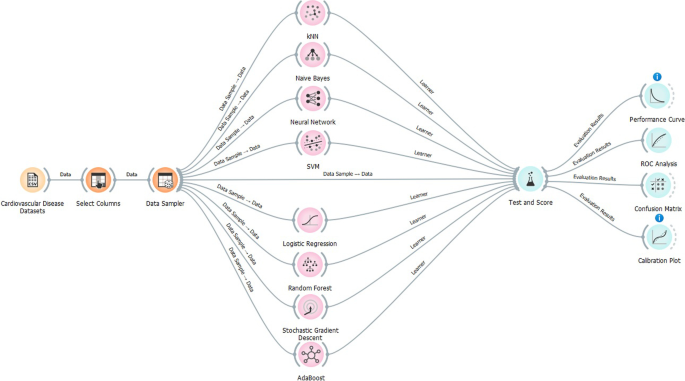Q1 Student paper: Hyperparameter optimization for cardiovascular disease data-driven prognostic system

Mahasiswa Magister Teknik Industri telah berhasil mempublikasikan artikel di jurnal Q1 Scopus Visual Computing for Industry, Biomedicine, and Art. Topik yang dituliskan pada paper ini adalah materi yang juga dibahas pada perkuliahan di Magister Teknik Industri.
Berikut adalah artikel tersebut:
Hyperparameter optimization for cardiovascular disease data-driven prognostic system
Written by: Jayson Saputra, Cindy Lawrencya, Jecky Mitra Saini & Suharjito
Abstract
Prediction and diagnosis of cardiovascular diseases (CVDs) based, among other things, on medical examinations and patient symptoms are the biggest challenges in medicine. About 17.9 million people die from CVDs annually, accounting for 31% of all deaths worldwide. With a timely prognosis and thorough consideration of the patient’s medical history and lifestyle, it is possible to predict CVDs and take preventive measures to eliminate or control this life-threatening disease. In this study, we used various patient datasets from a major hospital in the United States as prognostic factors for CVD. The data was obtained by monitoring a total of 918 patients whose criteria for adults were 28-77 years old. In this study, we present a data mining modeling approach to analyze the performance, classification accuracy and number of clusters on Cardiovascular Disease Prognostic datasets in unsupervised machine learning (ML) using the Orange data mining software. Various techniques are then used to classify the model parameters, such as k-nearest neighbors, support vector machine, random forest, artificial neural network (ANN), naïve bayes, logistic regression, stochastic gradient descent (SGD), and AdaBoost. To determine the number of clusters, various unsupervised ML clustering methods were used, such as k-means, hierarchical, and density-based spatial clustering of applications with noise clustering. The results showed that the best model performance analysis and classification accuracy were SGD and ANN, both of which had a high score of 0.900 on Cardiovascular Disease Prognostic datasets. Based on the results of most clustering methods, such as k-means and hierarchical clustering, Cardiovascular Disease Prognostic datasets can be divided into two clusters. The prognostic accuracy of CVD depends on the accuracy of the proposed model in determining the diagnostic model. The more accurate the model, the better it can predict which patients are at risk for CVD.
Silahkan akses link berikut ini untuk membaca full paper.
